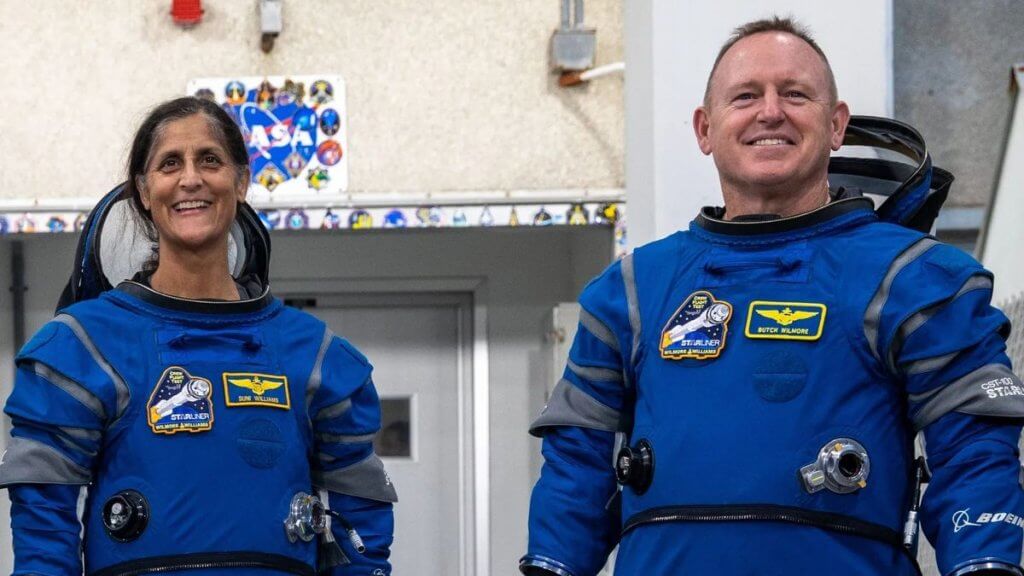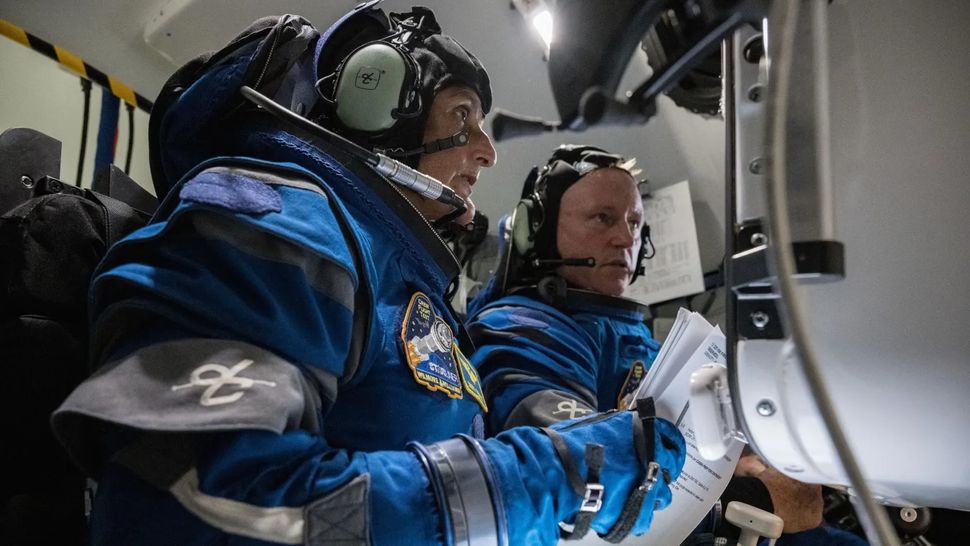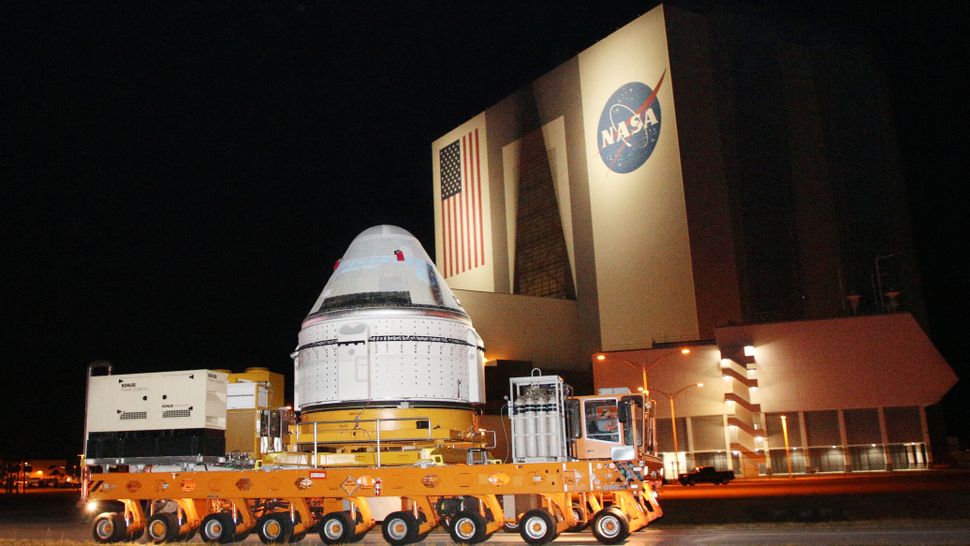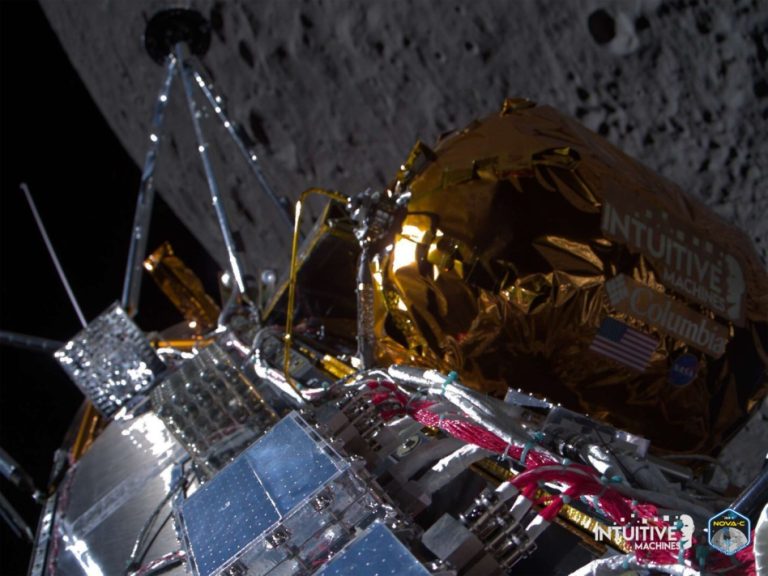
NASA astronauts enter quarantine for 1st crewed Boeing Starliner launch on May 6 (Image Credit: Space.com)
The first Starliner crew is in quarantine ahead of their scheduled May 6 launch.
The two NASA astronauts to fly aboard Boeing Starliner, Barry “Butch” Wilmore and pilot Suni Williams, entered standard pre-flight quarantine on Tuesday (April 22) at NASA’s Johnson Space Center (JSC) in Houston, agency officials stated in a press release.
Quarantine will “ensure the health and safety of the crew prior to liftoff, as well as prevent sickness of the astronauts at the International Space Station,” NASA officials stated. “During quarantine, astronaut contact is limited, and most interactions are remote — although family and some launch team members also may be in quarantine or cleared before interacting with the crew.”
The astronauts’ mission, Crew Flight Test or CFT, will launch to space from NASA’s Kennedy Space Center (KSC) near Orlando, Florida. The duo will also be the first humans to fly on board the United Launch Alliance (ULA) Atlas V rocket.
Boeing and SpaceX received contracts from NASA in 2014 for commercial crew missions to the ISS. Previous to commercial crew, NASA’s space shuttle regularly exchanged ISS crews until the program’s retirement in 2011 after 30 years of missions.
Boeing’s commercial crew contract for the Starliner is valued at $4.2 billion, compared to SpaceX’s $2.6 billion. SpaceX has been running operational ISS missions with Crew Dragon since 2020, while Starliner was delayed four years.
More issues were found in 2023, further pushing back human spaceflight: The suspension lines of Starliner’s main parachutes could handle less load than engineers thought, for example, and the capsule’s wiring was largely covered in flammable P213 tape.
During a two-day media tour at JSC in March that Space.com attended, the crew, NASA and Boeing officials emphasized that the delays were necessary for safety. Moreover, the team has confidence that everything is ready for astronauts. Should issues come up in flight, which is common on new spacecraft, Starliner will be in good hands: Williams and Wilmore are former U.S. Navy test pilots well-versed in working out the kinks.
Related: 1st Boeing Starliner astronauts are ready to launch to the ISS for NASA (exclusive)

NASA’s commercial crew program gave CFT its “go for launch” on April 18, following a flight test readiness review, officials wrote on X (formerly Twitter). Another review is scheduled on April 25, which is also the day that the astronauts are scheduled to fly to KSC for launch preparation.
Meanwhile, Starliner made a six-mile (10-kilometer) journey between KSC buildings on April 16 to reach ULA’s vertical integration facility, where it was integrated onto its Atlas V rocket. Engineers are testing the communications between the rocket and spacecraft before the stacked rocket rolls out to its KSC launch pad.

The first operational mission for Starliner, known as Starliner-1, is set for early 2025 at the earliest. The crew for that mission is NASA’s Scott Tingle, NASA’s Mike Fincke and the Canadian Space Agency’s Joshua Kutryk.
SpaceX and Boeing aren’t the only entities sending astronauts to the ISS, as Russia’s Soyuz spacecraft has been doing that since the complex began construction in 1998. Some NASA astronauts fly on Soyuz for technical and policy reasons, too.
NASA has several quarantine facilities available for astronauts and their support teams. JSC’s NASA Astronaut Quarantine Facility is a 12,000-square-foot complex with 12 private sleeping quarters, alongside restrooms, a fitness room and a full kitchen, according to general contractor Harvey Cleary.
KSC’s Astronaut Crew Quarters is roughly 26,000 square feet in size and is on the third floor of the Neil Armstrong Operations and Checkout Building, where spacecraft are tested and assembled. Among other features are 23 bedrooms and bathrooms, a suit room to get spacesuits on before launch, a kitchen, dining room, gym, conference rooms, laundry rooms, medical exam rooms and a flight surgeon’s office, NASA officials stated.








